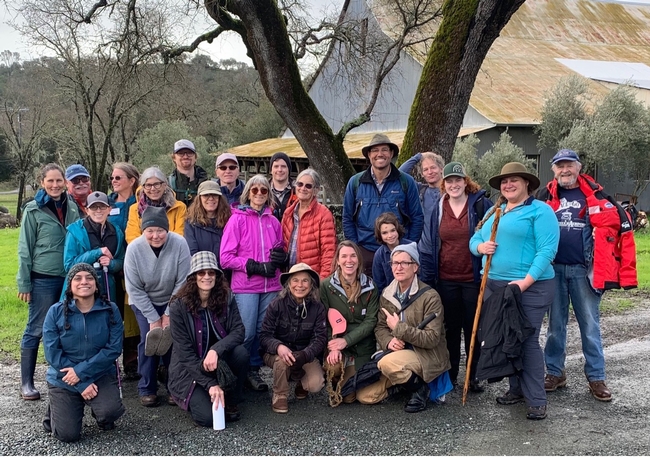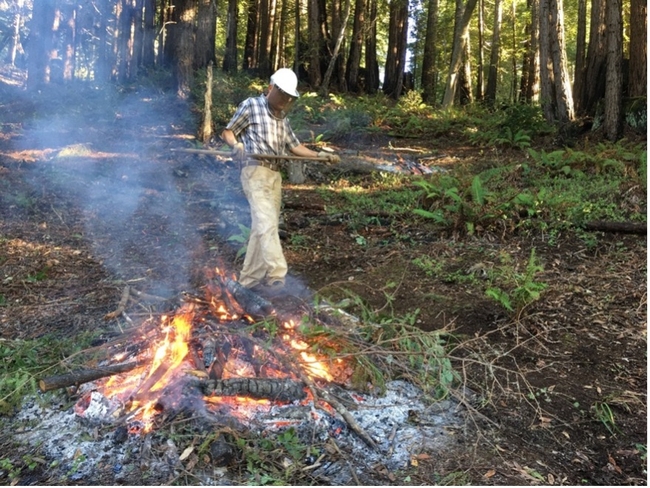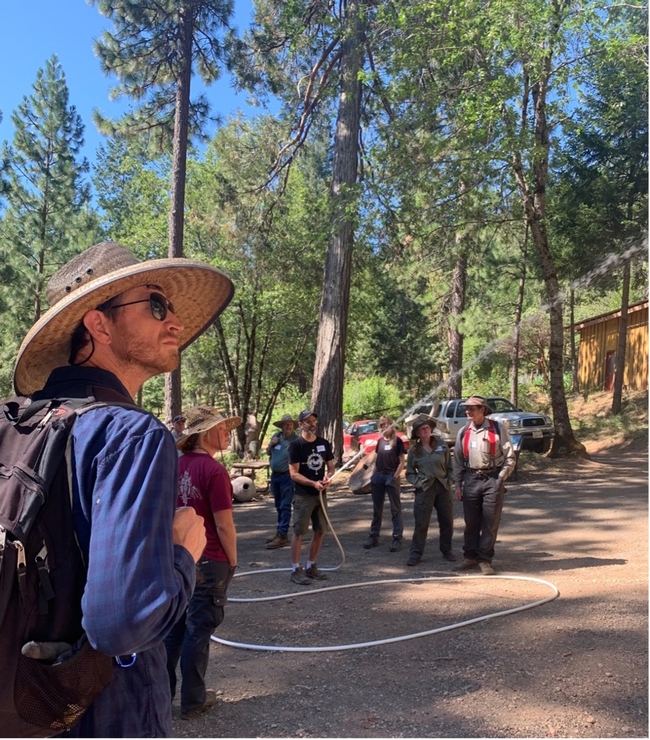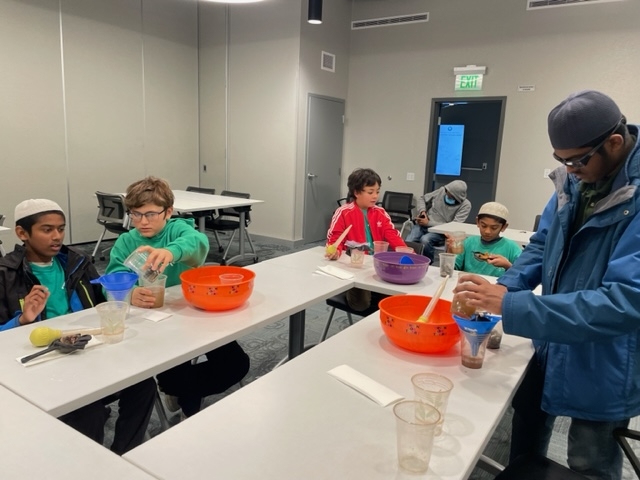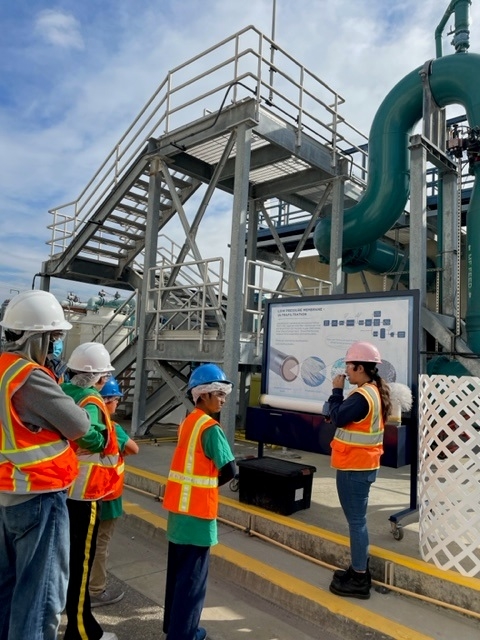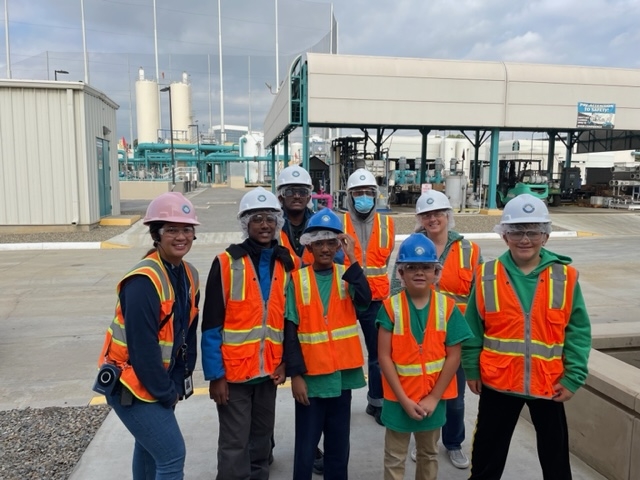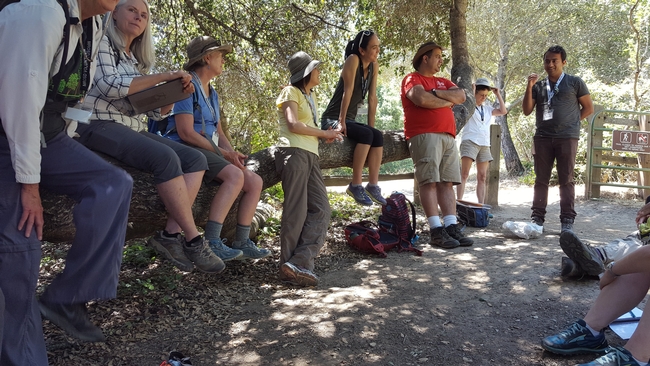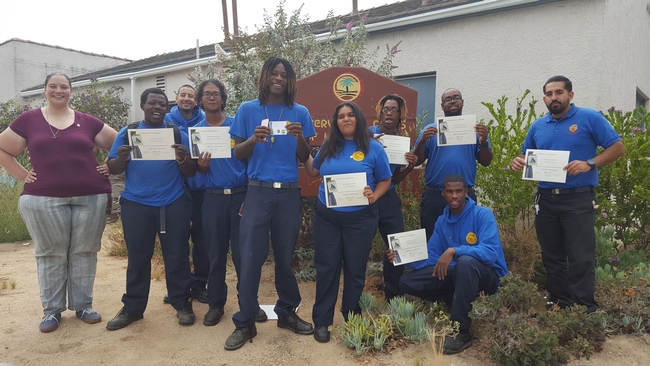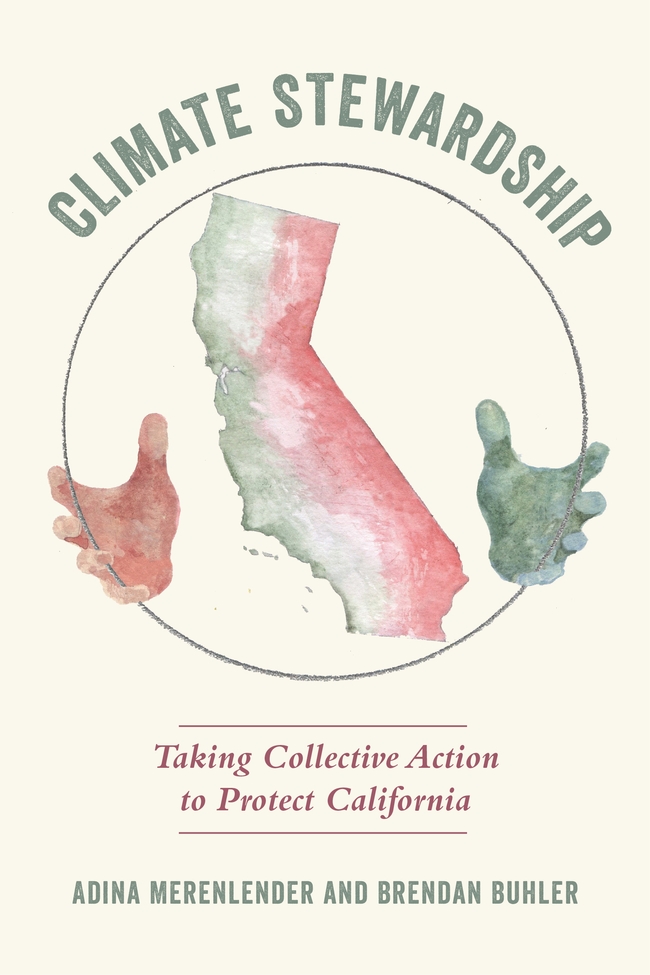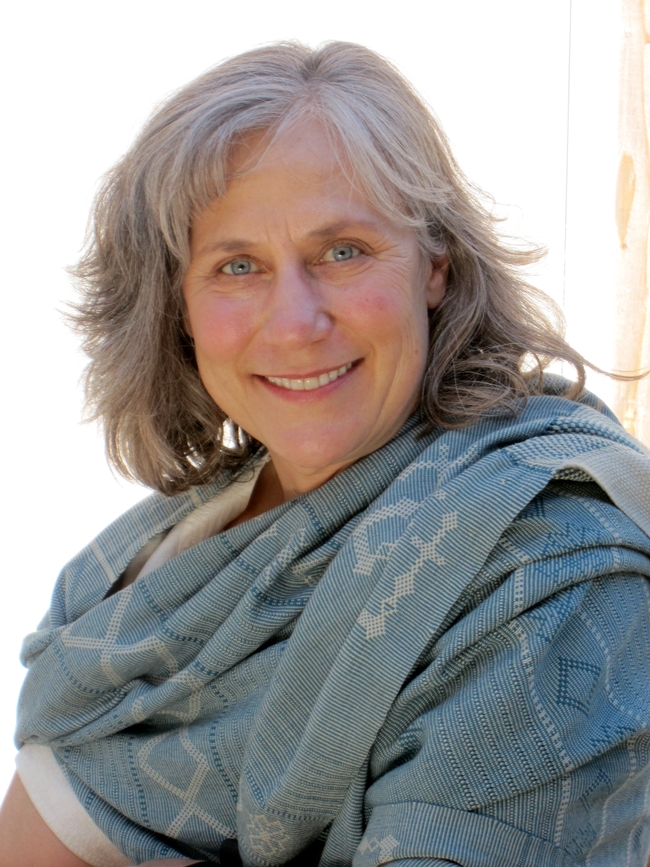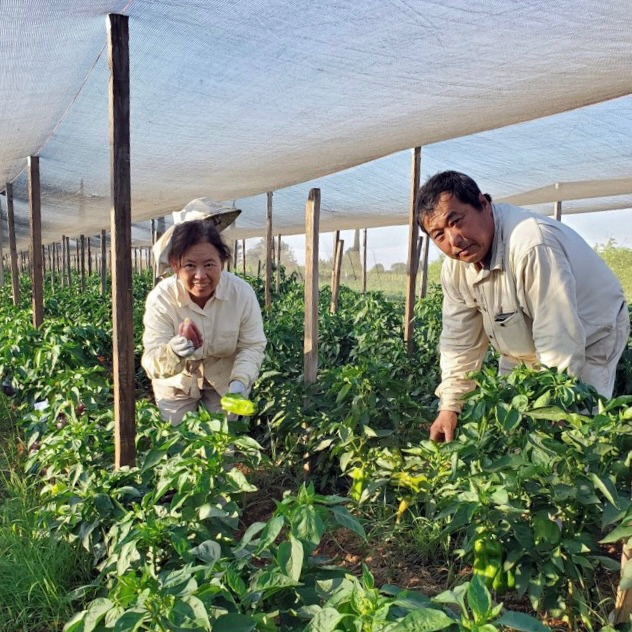Posts Tagged: stewards
Forest research and outreach compiles forestry voices in new story map project
For the past four years, Kim Ingram has been listening closely to the private forest landowners who participate in her Forest Stewardship Workshop series. During the workshops, landowners share their experiences clearing thickets of vegetation, replanting post-wildfire and tackling invasive species, and their concerns of who will take care of their forest when they're gone.
To alleviate their stress, Ingram–Forest Stewardship Education coordinator with University of California Agriculture and Natural Resources–turns to natural resource professionals from CAL FIRE, local Resource Conservation Districts, and the U.S Forest Service who can share knowledge and resources with participants. Recently, Ingram developed a story map that aims to provide landowners with a platform they can use to share their experiences and ways that they have been empowered to manage their land.
"It's not uncommon for small forest landowners to feel overwhelmed with their forest management responsibilities and uncertain over what steps to take first," said Ingram. "Through the Forest Stewardship Workshops and this story map project, we hope to show that there is an entire community of forest landowners in the same situation, learning from each other and moving forward towards their management goals."
The Forest Stewardship Story Map team used ArcGIS StoryMaps to design the project, with 15 participants providing interviews and visual content. StoryMaps provides a user-friendly interface where website visitors can either click on a county to view specific interviews or scroll to view the stories.
The forestry team plans to interview at least one landowner and natural resource professional in every forested county in California so private forest landowners have a local contact or can become inspired by a project in their area.
Theresa Ciafardoni, a forest landowner in Nevada County, said that the UC ANR Forest Stewardship Workshop helped her manage postfire restoration and long-term land use planning.
"It opened up so many options and possibilities," said Ciafardoni. "All the individuals who presented in the Forest Stewardship Workshop were open to phone calls for specific questions and provided invaluable technical assistance."
Involving landowners and forestry professionals with this project was an early decision made by Ingram, who believed it was important that the map held appeal beyond hosting stories. Now, the project functions as a networking tool for landowners seeking professional assistance, too.
Past Forest Stewardship Workshop presenters shared their contact information and the motivations behind their forest management work so that landowners could find assistance in their area. The professionals currently hosted on the map include Resource Conservation District managers, UC ANR forestry advisors and private contractors.
"The most motivated landowners are invested not only economically, but their heart is into it," said Ryan Tompkins, UC Cooperative Extension forestry advisor for Plumas, Sierra and Lassen counties. "The natural world is full of uncertainty, but they're committed to continuing education and learning about how to be a good land steward. This takes a certain level of humility recognizing that our tenure as a steward on the land is a very short period of a forest's lifetime."
Looking ahead, the team envisions the map as a working document that will eventually include interviews with indigenous tribal members who focus on traditional ecological knowledge projects, interviews and information from the UC ANR Postfire Forest Resilience Program, and a feature that will filter stories by topic (e.g. reforestation or prescribed burning).
"This isn't a project that could be completed by one person," explained Grace Dean, Forest Stewardship communications specialist. "The same way that Kim and other presenters explain forest management as a collaborative process holds true for this project."
The Forest Stewardship Workshop series gives participants the ability to start as beginners and build upon their knowledge and experiences. In the same vein, this story map provides the Forest Stewardship team a solid base of real stories to add on to over time. The hope is that it will grow into a multifaceted tool reaching new forest landowners, eventually enveloping their stories within the small forest landowner community.
To view the Forest Stewardship Story Map, visit: https://storymaps.arcgis.com/stories/bd062108d9894da7920d7aef06fe2c2c.
Los Angeles 4-H program cultivates future generation of water stewards
Ibrahim Yaaseen, member of the Palos Verdes Peninsula (PVP) 4-H club, grabs a hard hat and places it on top of his head. He then reaches for a bright orange safety vest and goggles to complete his safety gear outfit before joining the rest of his club members who are dressed the same.
The 4-H Youth Development Program of Los Angeles is already thinking about the future of water management and turned to the West Basin Municipal Water District in El Segundo to gain a deeper understanding of the precious resource we often take for granted.
The University of California 4-H Youth Development Program is managed through local Cooperative Extension offices. Through hands-on learning experiences, 4-H empowers youth to reach their full potential and enables them to build self-esteem, connect with their community and emerge as leaders.
Dee Keese, community club leader for the PVP 4-H club, coordinated an exclusive and interactive tour of West Basin's Edward C. Little Water Recycling Facility for the club's monthly marine biology meeting in December 2022.
Eager to inspire a stronger appreciation for water, Janel Ancayan, the West Basin's education coordinator, challenged the youth to build their own water filters using materials including fabric, a strainer, and a funnel. Since no specific directions were given, the activity challenged each student's science and engineering skills, such as carrying out an investigation, designing a solution, and communicating information with team members.
During the tour, students saw firsthand the impressive equipment and essential staff members that help to produce nearly 40 million gallons of recycled water each day. At the end of the day, students left with a deeper understanding of water resources and felt empowered to do their part to conserve water sources.
“We learned that recycling water helps to conserve our limited water supply and improves the environmental condition of our coastal waters,” said Yaaseen. “We ultimately learned a great deal about how to conserve water for future generations and that water conservation is one of the most important elements in combating climate change.”
Though Keese has volunteered as community club leader for 48 years, this is only the second time she has partnered with the West Basin. “I like to mix it up,” she said. “I'm always looking for community organizations and local businesses to partner with because these are places that the kids will likely interact with since they're nearby.”
Regardless, it's leaders like Keese and programs like 4-H that encourage water stewards like Ancayan. “I'm always so humbled and inspired when teachers make it a point to come out and visit our facility. In Southern California especially, [water] is not something we think about,” Ancayan said.
Even in a drought, water continues to flow from our faucets allowing us to shower, wash dishes or water the lawn. It's no wonder why water conservation is not always top of mind, especially for consumers. Educating the public, and targeting the younger generation, however, is a great start to prepare for the future.
West Basin offers a variety of educational programs that focus on different age groups. Many of them involve hands-on learning like the Teach and Test volunteer program, a partnership with the Surfrider Foundation, where high school students test samples of coastal water for bacteria, and then publicly share their findings to contribute to water quality monitoring in the area.
According to Yaaseen, the time spent with Ancayan at the West Basin was “one-of-a-kind” and provided a “golden opportunity” to learn why water recycling facilities are important. Ancayan hopes that her time spent with students ultimately influences them to consider a career in water.
“It's not a glamorous job but I'm really passionate about the next generation of water workers,” she said. “I hope that once they see the engineering, the excitement of these scientists that work in our laboratory and everything in between, that they start to think about water as a future career path.”
For those interested in joining 4-H, visit https://4h.ucanr.edu/Members/
To read this story in Spanish, please visit:
Programas 4-H de Los Ángeles forman a la futura generación de administradores de los recursos hídricos
https://ucanr.edu/blogs/blogcore/postdetail.cfm?postnum=57063
UC California Naturalist Conference, Oct. 7–9, highlights environmental challenges, diverse voices
Climate change, extreme drought, intense wildfires and the COVID-19 pandemic can all be linked to humanity's troubled relationship with the natural world.
For more than a decade, healing and deepening connections between people and the environment have been pillars of the UC California Naturalist Program. Partnering with over 80 organizations across the state, the program – a part of University of California Agriculture and Natural Resources – has trained over 6,500 participants and certified more than 5,350 volunteers who engage fellow community members in advancing environmental stewardship and climate resilience.
To celebrate its 10th anniversary, the program is convening a statewide conference Oct. 7–9 along the north shore of Lake Tahoe, under the theme of “Celebrating Community, Nature and Resilience for a Just Future.” Keynote speakers are José González, founder of Latino Outdoors; Rhiana Jones, director of the Washoe Environmental Protection Department; and Obi Kaufmann, artist and eco-philosopher. Members of the public are invited to register for the conference.
UC Naturalists and Climate Stewards (the latter program was established in 2020), as well as instructors for both certification courses, will gather with community members to reflect on their work, share best practices and chart a path toward a more sustainable and equitable future.
“We're striving to create a welcoming and safe space where we can challenge our own long-standing assumptions and perspectives and hear from a wide range of voices on crucial topics, including the latest on climate change and resilience; participatory science; and equity, diversity and inclusion in the conservation space,” said Gregory Ira, director of the UC California Naturalist Program.
Ira also highlighted the conference's equity-based registration fee structure, aimed at minimizing cost as a barrier to participation.
“We encourage anyone with an interest in learning more about California's unique ecosystems – and becoming a better steward of the environment – to join us for the weekend,” he said. “We truly value the perspectives and experiences you can bring to our conference.”
The conference agenda will feature engaging presentations, hands-on workshops and field trips to the area's natural wonders. Presenters include:
- Herman Fillmore, culture/language resources director, Washoe Tribe of Nevada and California
- Don Hankins, Professor, Geography and Planning, Chico State University
- Patricia Maloney, Forest and Conservation Biologist, Tahoe Environmental Research Center, UC Davis
- Adina Merenlender, co-founder of the California Naturalist Program and UC Cooperative Extension professor in conservation science
- Jennifer Norris, deputy secretary for biodiversity and habitat, California Natural Resources Agency
- Ken-ichi Ueda, co-founder and co-director of iNaturalist, UC Berkeley School of Information
For more information and to register, visit the conference website at https://ucanr.edu/sites/2022CalNatCon/.
New book shows how Californians are bolstering climate resilience
Wildfires that generate their own weather, drought, record-breaking heatwaves, and frequent flooding are compelling more people to try to mitigate and adapt to climate change. A new book co-authored by Adina Merenlender, UC Cooperative Extension specialist at UC Berkeley, shows how Californians are working together across diverse communities and landscapes to improve resilience and address climate justice.
“The climate leaders profiled in this book are inspirational,” said Wade Crowfoot, California's Natural Resources secretary, in his review of “Climate Stewardship: Taking Collective Action to Protect California.”
“Their stories reflect the diversity of California's people and landscapes and show the power of collective action to create change,” he wrote. “They also reveal our profound connection with nature and with one another, and the power of nature-based solutions to address the climate crisis. Perhaps most importantly, this wonderful book reminds us of what we are capable of as individuals to improve the future of our planet and people.”
Published by UC Press, “Climate Stewardship” will be required reading for participants of the UC Climate Stewards certification course, but it isn't a textbook. The book is a collection of personal stories of individuals who are striving to improve climate resilience.
“The stories, many gathered through UC Cooperative Extension efforts, show what everyday people can do together to improve community resilience across agricultural, natural and urban landscapes,” Merenlender said. “‘Climate Stewardship' also offers an uplifting way to learn about climate science that is most relevant for California's communities and ecosystems.”
Michael Yang, UC Cooperative Extension small farms and specialty crops agricultural assistant, works with Hmong farmers in Fresno County, such as the Tchieng family, to advance climate-smart agriculture. In the book, Ka Tchieng, whose family grows vegetables, wrote about how they are adapting their farming practices to climate change. "My parents, Siong and Fong Tchieng, are picking green bell, purple bell and sweet Italian peppers. The shade is to help prevent sunburn on the peppers during the hot summer in Fresno,” she wrote.
While the book is research-based, it is written for a general audience, Merenlender said.
“It is written in narrative form with stories meant to showcase what can be done and some relevant climate science is woven throughout,” she said. “For this reason, it is meant to be of interest to a wide California audience.”
The book is illustrated with original paintings by Obi Kaufmann, author of “The California Field Atlas,” and co-authored by Brendan Buhler, an award-winning science writer.
For more information about the book, see the California Naturalist blog at http://calnat.ucanr.edu/cs/Climate_Stewardship. To buy the book from UC Press, visit https://www.ucpress.edu/book/9780520378940/climate-stewardship.
For UC Climate Stewards, every day is Earth Day
From cities to rural communities, UC Climate Stewards are fostering climate resilience
Earth Day has strong California roots: Senator Gaylord Nelson was inspired to organize the first event in 1970 after witnessing the 1969 Santa Barbara oil spill. Today, California is once again the focus of a national conversation about the health of the planet — both because of the state's groundbreaking climate policies and the scale of its climate challenges: wildfires, drought, extreme heat and sea level rise are redefining life in the country's most populous state.
This year, a growing cohort of UC Climate Stewards are carrying forward the mission of the original Earth Day: informed action. Graduates of the 40-hour certification course, which is under the umbrella of the UC California Naturalist Program, learn how to communicate with community members about complex and sometimes traumatic scientific issues and carry out climate resilience strategies in their communities. Each course is hosted by one of 17 partner institutions including Community Environmental Council, Pasadena City College and the Pepperwood Foundation — see the full list of partners below. Now in its second year, the program is on track to graduate roughly 300 Climate Stewards by the end of 2021.
The curriculum is also in action across California State Parks: Together with senior park interpreters and managers, the UC Climate Stewards team delivered a two-week climate change interpretation training to 54 park staff members in March. Natural Resources Secretary Wade Crowfoot, who oversees state parks, has made climate resilience a priority since his appointment in January 2019. Crowfoot and Department of Parks and Recreation Director Armando Quintero spoke at the beginning of the training.
Due to COVID-19, many UC Climate Stewards completed their coursework online. That hasn't dampened their impact across the state: Giangelo Leos completed the course remotely as part of a cohort hosted by the Pepperwood Foundation. His capstone project focused on changing community narratives about wildfire. The 2020 Bobcat Fire burned in the San Gabriel Mountains above Leos's hometown of Monrovia, triggering evacuations and ongoing recovery and planning efforts. Leos said that post-fire responses have been fear-driven and fixated on the worst aspects of the damage — rather than treating fire as a regular and ongoing feature of life in Monrovia.
Climate change communication is a key component of the UC Climate Stewards course and Leos recognized the need to change the tone of the conversation in his community to one of hope and action. He is planning a series of speaking events and initiatives, including a push to establish a city Fire Safe Council. Connecting to the positive, Leos plans to tell event participants about Braunton's Milkvetch, an endangered plant species that is propagated by fire and only appears in 20 sites in Los Angeles County; Monrovia is one of them. “When the land is managed appropriately...there are great things that fire can do,” Leos said in a video recording of his capstone presentation.
Vineyard and winery owner Hal Hinkle was also part of the Pepperwood Foundation course. Hinkle recruited five other course participants, including some of his colleagues at Sei Querce Wines and California Land Stewardship Institute Executive Director Laurel Marcus. Hinkle and Marcus signed up for the UC Climate Stewards course partly to advance and refine the rollout of the institute's Climate Adaptation Certification (CAC) program, in which Hinkle's vineyard is participating as a pilot site. The voluntary CAC program is designed both to push winegrowers' existing sustainability practices towards more climate-aware actions and to serve as an on-the-bottle message to make wine consumers more aware of climate-friendly practices.
“The UC Climate Stewards program helped us envision and position the message of how wine can be climate-sensitive for both consumers and producers,” Hinkle said.
UC Climate Stewards is seeking to partner with more community-based organizations that are led by or serve Black,Latinx and Indigenous Californians. UC California Naturalist Program Director Greg Ira said that relationships with organizations such as Community Nature Connection and Pasadena City College ensure that the course is accessible to and usable by many California communities. “We recognize that climate education and stewardship needs to be culturally relevant, address local priorities and issues, and recognize root causes of the climate crisis,” Ira said. Contact the program at https://bit.ly/3dE5gGJ if you are interested in hosting and co-designing a UC Climate Stewards course for your community.
Sarah-Mae Nelson, academic coordinator for UC Climate Stewards, says there's something in the course for anyone wanting to talk about and take action on climate resilience.
“From a small winery in a rural agricultural setting to a suburb of the largest city in the state, from a community college student just starting their career to a retiree working to create a more resilient future for their grandchildren, we are all in this together,” Nelson said.
List of UC Climate Stewards partners:
-
American River Conservancy
-
Columbia College
-
Community Environmental Council
-
Community Nature Connection
-
Conservation Society of California
-
Hopland Research and Extension Center
-
National Estuarine Research Reserve/Coastal Training Program
-
Pacific Grove Museum of Natural History
-
Pasadena City College
-
Pepperwood Preserve
-
Point Reyes National Seashore Association
-
Riverside-Corona Resource Conservation District
-
Santa Clara County Parks
-
Sierra Streams Institute
-
Sonoma Ecology Center
-
UC Riverside Palm Desert
-
USC Sea Grant
UC Agriculture and Natural Resources brings the power of UC to all 58 California counties. The California Naturalist Program and other UC ANR statewide programs rely on donor contributions. To learn more about how to support or get involved with California Naturalist in your community, visit http://calnat.ucanr.edu.


